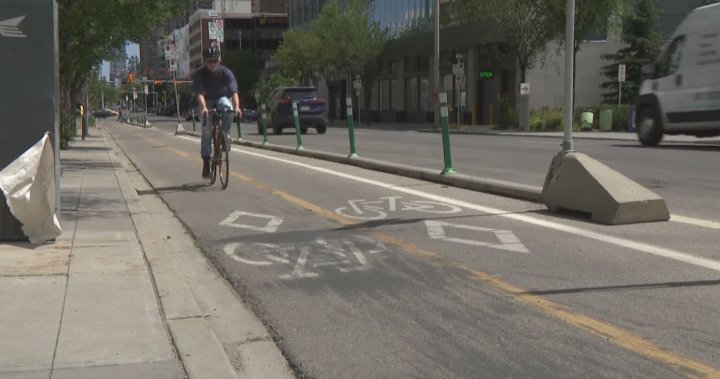The long-simmering tension between provincial and municipal leadership in Alberta erupted into public view this week as Transportation Minister Devin Dreeshen and Calgary Mayor Jyoti Gondek exchanged sharp words over the city’s bicycle infrastructure plans. What began as a policy disagreement has quickly escalated into a political standoff that highlights the broader jurisdictional friction between Alberta’s government and its largest city.
“The province is ultimately responsible for the highway network in Alberta,” Dreeshen declared in a pointed statement Tuesday, following the city’s approval of a planned bike lane on Memorial Drive. The minister characterized the decision as “frustrating” and suggested it would negatively impact commuters who rely on the vital east-west corridor.
Mayor Gondek swiftly countered the provincial criticism, defending the city’s authority over its transportation planning. “I believe Minister Dreeshen is overstepping his bounds,” she told reporters during a press conference at City Hall. “Memorial Drive is a city road, and the city maintains jurisdiction over city roads.”
The dispute centers on Calgary’s cycling strategy, which aims to expand the city’s network of protected bike lanes. City planners contend the infrastructure is essential for promoting sustainable transportation options, reducing emissions, and enhancing safety for vulnerable road users. The Memorial Drive project specifically includes plans for a dedicated cycling lane that would connect existing pathways while potentially reducing vehicle capacity.
Transportation experts familiar with the situation note that this controversy reflects more than a simple disagreement over bike lanes. “This is about the fundamental question of who controls urban planning in Alberta’s major cities,” said Dr. Alexandra Petersen, an urban planning professor at the University of Calgary. “The province is flexing its constitutional muscle while the city is asserting its right to determine local transportation priorities.”
The clash occurs against the backdrop of Calgary’s evolving transportation landscape, where increasing congestion and environmental concerns have prompted calls for more diverse mobility options. Cycling advocates point to successful bike lane implementations in other North American cities that have increased ridership while minimizing traffic disruption.
Traffic data from the city shows Memorial Drive carries approximately 60,000 vehicles daily, making it one of Calgary’s busiest thoroughfares. The proposed changes would reduce vehicle lanes in certain sections to accommodate protected cycling infrastructure—a modification that has triggered alarm among some commuters and the provincial government.
“We’ve invested millions in highway infrastructure around Calgary,” Dreeshen noted, emphasizing the province’s role in funding major transportation arteries. Provincial officials suggested that reducing vehicle capacity on Memorial Drive could push more traffic onto Deerfoot Trail and other provincial highways, potentially requiring additional infrastructure investments.
Mayor Gondek dismissed these concerns as overblown, citing traffic studies that suggest the impact on vehicle flow would be minimal while providing significant benefits for cyclists. “We’re making evidence-based decisions that reflect the diverse transportation needs of all Calgarians,” she stated.
The public reaction has been predictably divided. Business groups and some commuter organizations have aligned with the province’s position, while environmental advocates and urban planning experts have generally supported the city’s approach. Social media platforms have become battlegrounds where Calgarians debate the merits of expanded cycling infrastructure versus maintaining vehicle capacity.
Local resident Susan Yamamoto, who commutes along Memorial Drive daily, expressed concern about potential traffic implications. “I understand the need for bike lanes, but Memorial is already congested during rush hour,” she said. Meanwhile, cycling advocate Michael Chen countered, “Protected bike lanes aren’t just nice-to-haves—they’re essential safety infrastructure for people who choose not to drive.”
The dispute has broader implications for provincial-municipal relations across Alberta. Political analysts suggest it reflects the UCP government’s increasingly assertive stance toward urban centers, which typically lean more progressive in their policy approaches than the province’s conservative leadership.
As this standoff continues to unfold, the fundamental question remains: in a province where cities technically exist at the pleasure of the provincial government, who ultimately has the final say on urban transportation planning? With both sides digging in their heels, Calgarians are left wondering whether this dispute will result in compromise or further entrenchment in what has become much more than a simple disagreement about bike lanes.
Will this controversy reshape how provincial and municipal governments navigate their overlapping jurisdictions, or is it merely the latest chapter in Alberta’s long history of intergovernmental tension?










